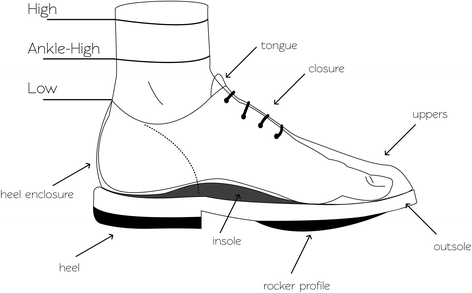Diabetic Foot Australia guideline on footwear for people with diabetes
- PMID: 29371890
- PMCID: PMC5769299
- DOI: 10.1186/s13047-017-0244-z
Diabetic Foot Australia guideline on footwear for people with diabetes
Abstract
Background: The aim of this paper was to create an updated Australian guideline on footwear for people with diabetes.
Methods: We reviewed new footwear publications, (inter)national guidelines, and consensus expert opinion alongside the 2013 Australian footwear guideline to formulate updated recommendations.
Result: We recommend health professionals managing people with diabetes should: (1) Advise people with diabetes to wear footwear that fits, protects and accommodates the shape of their feet. (2) Advise people with diabetes to always wear socks within their footwear, in order to reduce shear and friction. (3) Educate people with diabetes, their relatives and caregivers on the importance of wearing appropriate footwear to prevent foot ulceration. (4) Instruct people with diabetes at intermediate- or high-risk of foot ulceration to obtain footwear from an appropriately trained professional to ensure it fits, protects and accommodates the shape of their feet. (5) Motivate people with diabetes at intermediate- or high-risk of foot ulceration to wear their footwear at all times, both indoors and outdoors. (6) Motivate people with diabetes at intermediate- or high-risk of foot ulceration (or their relatives and caregivers) to check their footwear, each time before wearing, to ensure that there are no foreign objects in, or penetrating, the footwear; and check their feet, each time their footwear is removed, to ensure there are no signs of abnormal pressure, trauma or ulceration. (7) For people with a foot deformity or pre-ulcerative lesion, consider prescribing medical grade footwear, which may include custom-made in-shoe orthoses or insoles. (8) For people with a healed plantar foot ulcer, prescribe medical grade footwear with custom-made in-shoe orthoses or insoles with a demonstrated plantar pressure relieving effect at high-risk areas. (9) Review prescribed footwear every three months to ensure it still fits adequately, protects, and supports the foot. (10) For people with a plantar diabetic foot ulcer, footwear is not specifically recommended for treatment; prescribe appropriate offloading devices to heal these ulcers.
Conclusions: This guideline contains 10 key recommendations to guide health professionals in selecting the most appropriate footwear to meet the specific foot risk needs of an individual with diabetes.
Keywords: Diabetes mellitus; Foot ulcer; Footwear; Guideline; Prevention.
Conflict of interest statement
Not applicableNot applicableJJvN, PAL, DGA, SAB, RF, KH, EK, MM, BP, KP, JP, PRW: nothing to declare in relation to this manuscript. KHS runs a Pedorthic Clinic in Dee Why, NSW, Australia. HBM is Editor-in-Chief of Journal of Foot and Ankle Research. It is journal policy that editors are removed from the peer review and editorial decision making processes for papers they have co-authored.Springer Nature remains neutral with regard to jurisdictional claims in published maps and institutional affiliations.
Figures
References
Publication types
MeSH terms
LinkOut - more resources
Full Text Sources
Other Literature Sources
Medical


